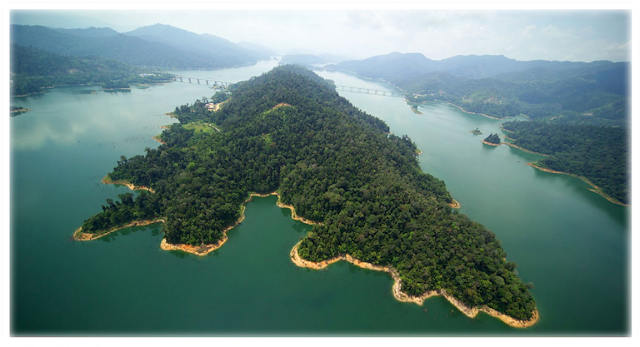The Royal Belum State Park is a huge park in the northern parts of Peninsular Malaysia. It is part of the even bigger Belum-Temengor Forest Complex (BTFC) that is shared with Thailand. Together with Taman Negara National Park it is one of the oldest rainforest in world, dating back over 130 million years. Belum is a state park and not an official National Park. This means that local government is allowed to use the area for production forest and it is open for future development. There are efforts to get the government to gazette Belum as a national park, though up till now only a part of the huge forest is conserved and protected as state park. Belum has the potential to become one of Malaysia's premier eco-tourism destinations, if managed well.
Wildlife surveys show that Royal Belum is an important habitat for large mammals like the seladang (Bos gaurus), Asian elephant (Elephas maximus) and Malayan tiger (Panthera tigris jacksoni). The area is also home to the endangered Sumatran rhinoceros (Dicerorhinus sumatrensis), one of very few left in Peninsular Malaysia. Belum-Temengor is the only forest in Malaysia with all 10 species of Malaysian hornbills including large flocks of the plain-pouched hornbill (Rhyticeros subruficollis).
Getting There
Getting to the lush Rainforest of Belum which situated about 300km from Kuala Lumpur, is to head overland via Kuala Kangsar (TR 1) and Grik (TR 76), and then onto the east-west highway (TR 4) to Banding Island (on Temenggor lake).
Accommodation
Facility
• Camp site
• Jetty
• Hanging Bridge
• Toilets
• Bathrooms
• Gazebo
• Open Hall
• Open Kitchen
• Wildlife Hide
Activity
• Jungle Trekking
• Overnight Stay at Wildlife Observation Hide (Bumbun)
• Visiting Orang Asli (aborigines) Settlement
• Angling / Fishing
• Bird Watching
• Boating
• Camping
• Swimming
• Waterfalls
• Traditional Bamboo Rafting
Perak State Park Corporation
Tingkat 1, Kompleks Kerajaan Negeri
Daerah Hulu Perak
33300 Gerik, Perak Darul Ridzuan
Fax:605-791 2641



















































